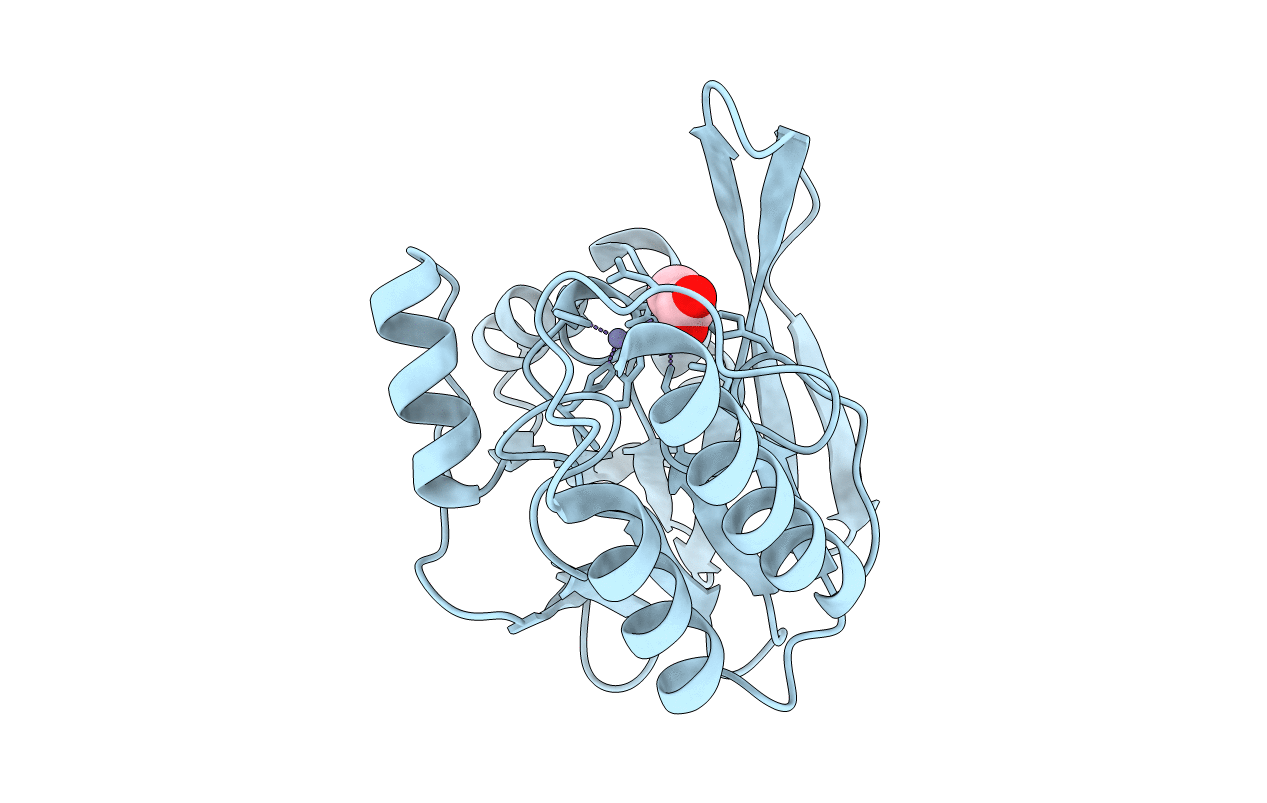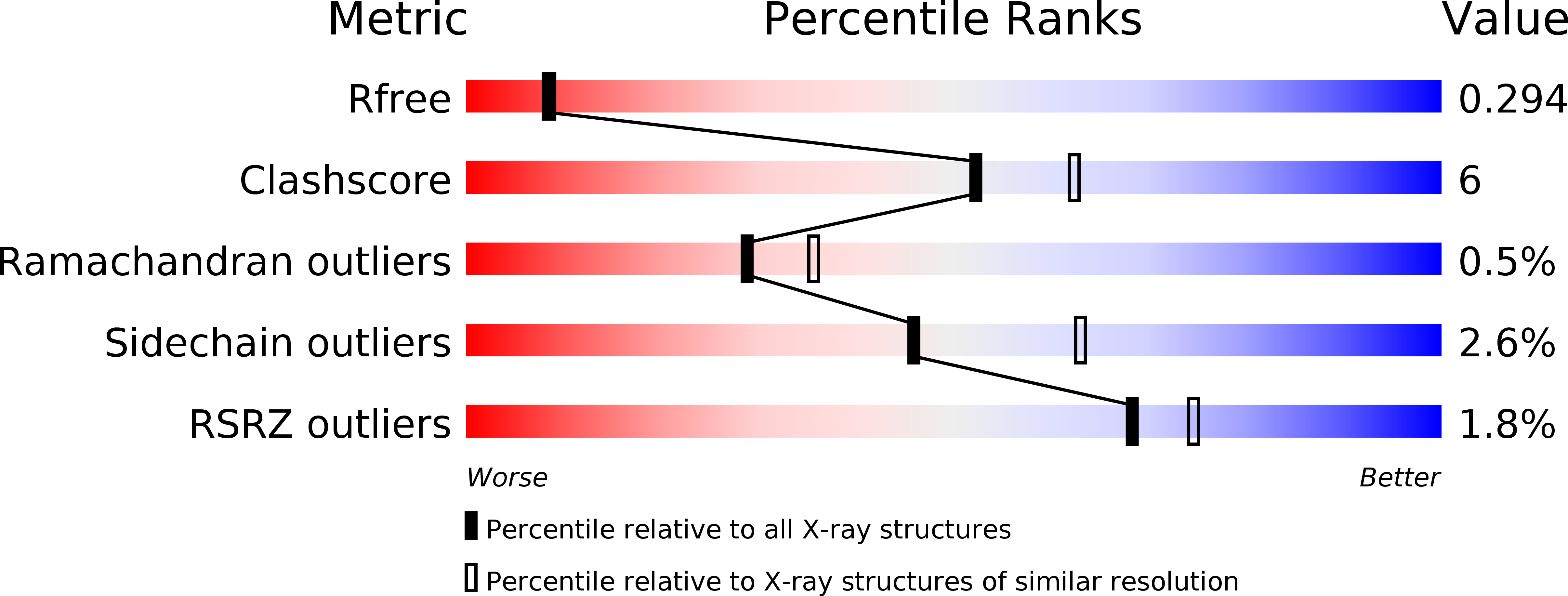
Deposition Date
2014-08-13
Release Date
2014-12-24
Last Version Date
2023-11-08
Entry Detail
PDB ID:
4UBQ
Keywords:
Title:
Crystal Structure of IMP-2 Metallo-beta-Lactamase from Acinetobacter spp.
Biological Source:
Source Organism:
Acinetobacter baumannii (Taxon ID: 470)
Host Organism:
Method Details:
Experimental Method:
Resolution:
2.30 Å
R-Value Free:
0.29
R-Value Work:
0.23
R-Value Observed:
0.23
Space Group:
P 21 21 21


